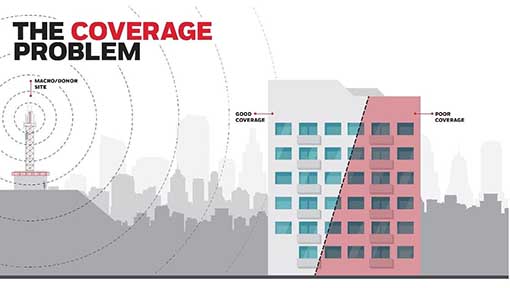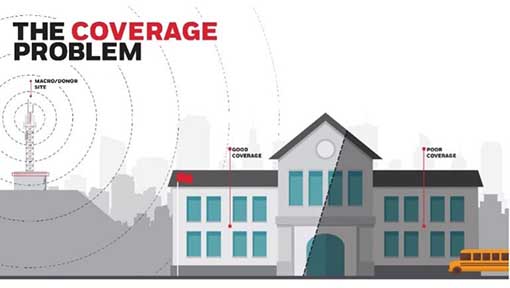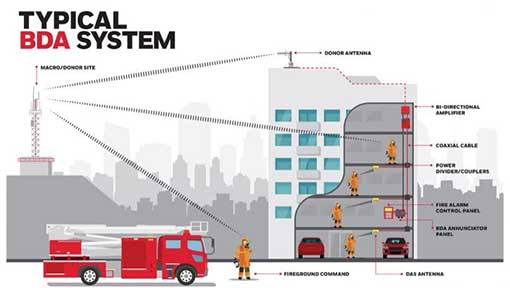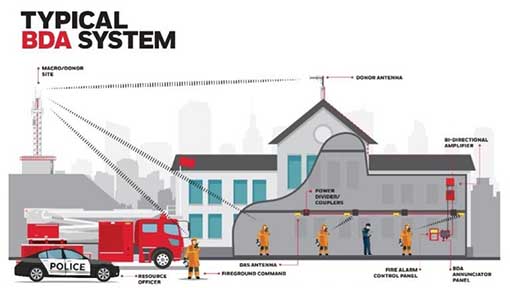PUBLIC SAFETY BDA & DAS (ERCES)
Public Safety DAS & BDA Systems
Reliable radio communication is essential for first responders. Public Safety Distributed Antenna Systems (DAS) and Bi-Directional Amplifiers (BDA) are designed to ensure consistent, uninterrupted radio coverage inside buildings, especially during emergencies.
New commercial buildings, large residential complexes, and facility expansions are now required to meet local and national fire code standards, including those from the NFPA and IFC. These codes mandate adequate in-building radio coverage for emergency personnel.
How Public Safety DAS Systems Work
A Public Safety DAS system captures, amplifies, and redistributes emergency radio signals throughout a building. Key components include:
- Donor Antenna: Receives external emergency radio signals.
- Bi-Directional Amplifier (BDA): Boosts both incoming and outgoing signals.
- DAS Network: Coaxial or fiber cabling with internal antennas to distribute signal.
- Battery Backup: Keeps the system operational during power outages.
Larger facilities often require fiber DAS to maintain signal strength across long distances.
The Problem: Poor Radio Coverage Inside Buildings & Schools:


The Solution: A BDA System :


ERCES Solutions by Radio Communications of Charleston
Our Emergency Responder Radio Coverage Systems (ERCES) support P25-compliant two-way radio systems and meet the requirements of jurisdictions across the U.S. We design solutions compatible with:
- VHF (150–170 MHz)
- UHF (450–512 MHz)
- 700/800 MHz
- FirstNet® / Band 14
We work closely with Authorities Having Jurisdiction (AHJs) to ensure full compliance and seamless inspections.
Key Fire & Safety Codes
Public safety DAS systems must comply with several critical codes:
- NFPA 72: Requires dedicated DAS for emergency responder communication, with backup power.
- NFPA 1221 / 1225: Covers the full spectrum of emergency communication systems.
- IFC Section 510: Requires buildings with inadequate radio coverage to install signal-boosting systems certified by the FCC.
Code Compliance Made Simple
Fire codes evolve, and local interpretations can vary. Our team stays up to date on all regulations and maintains strong relationships with AHJs to streamline compliance. We’ll help you identify what your project needs—and ensure it’s done right.
